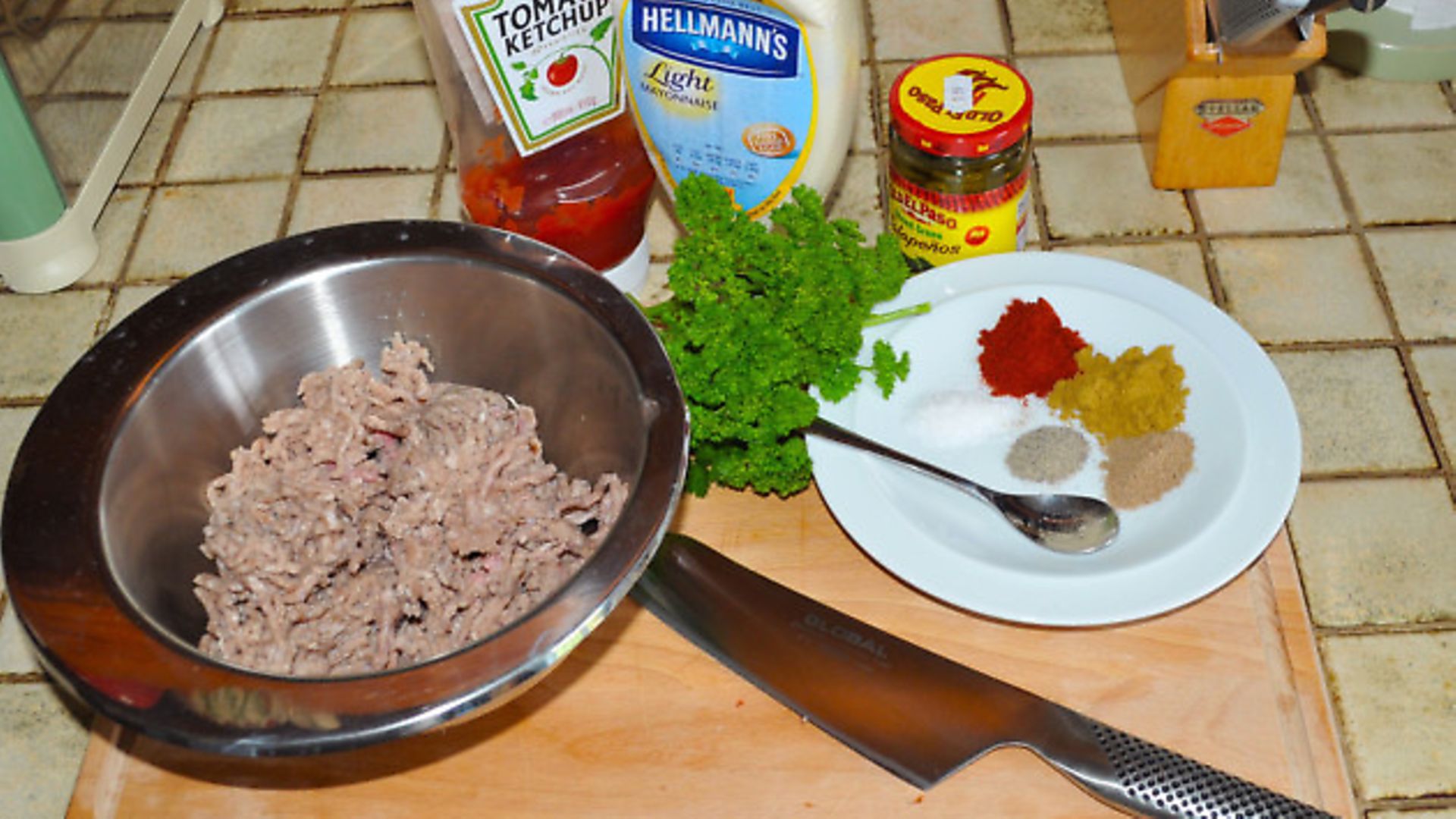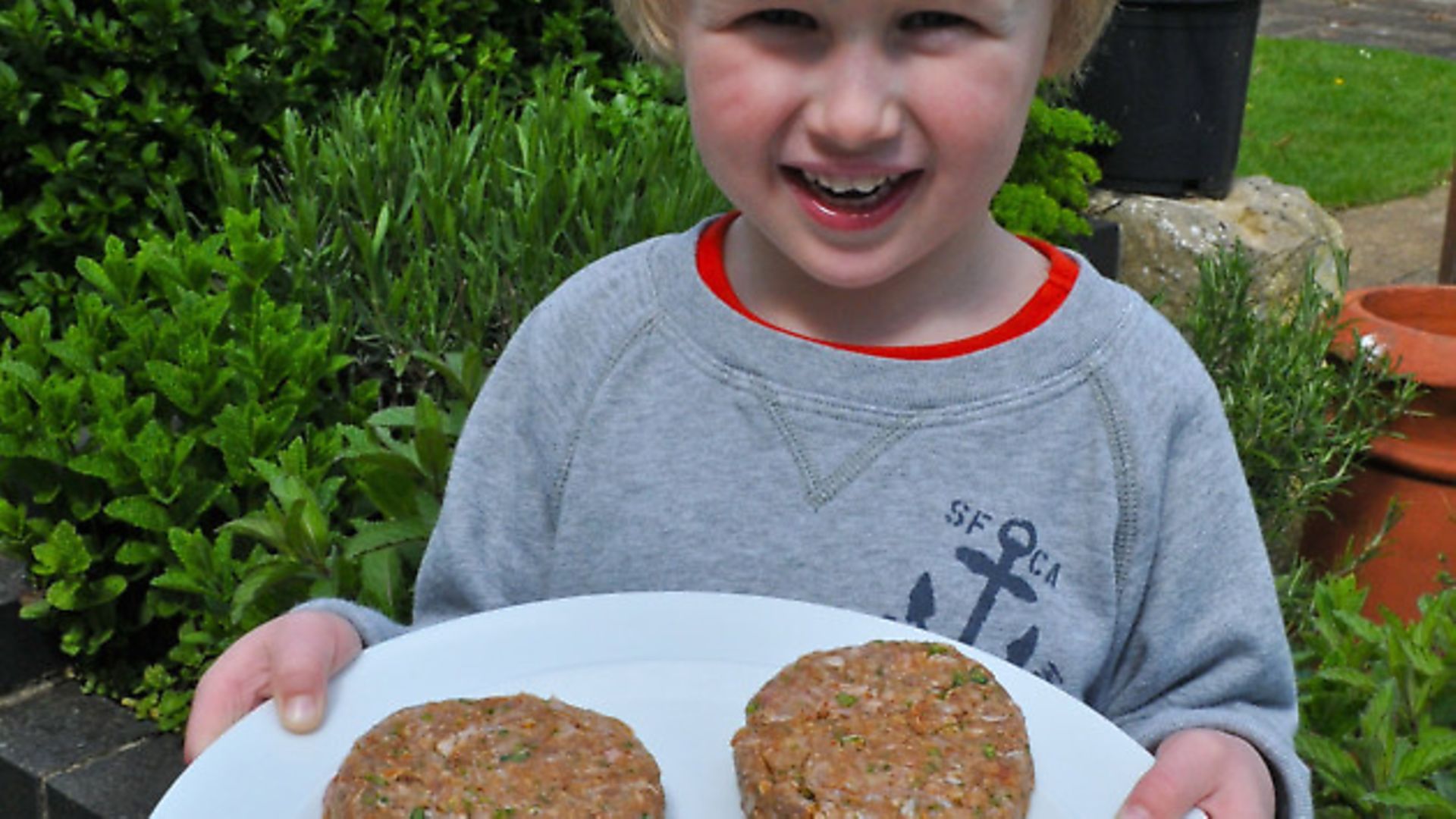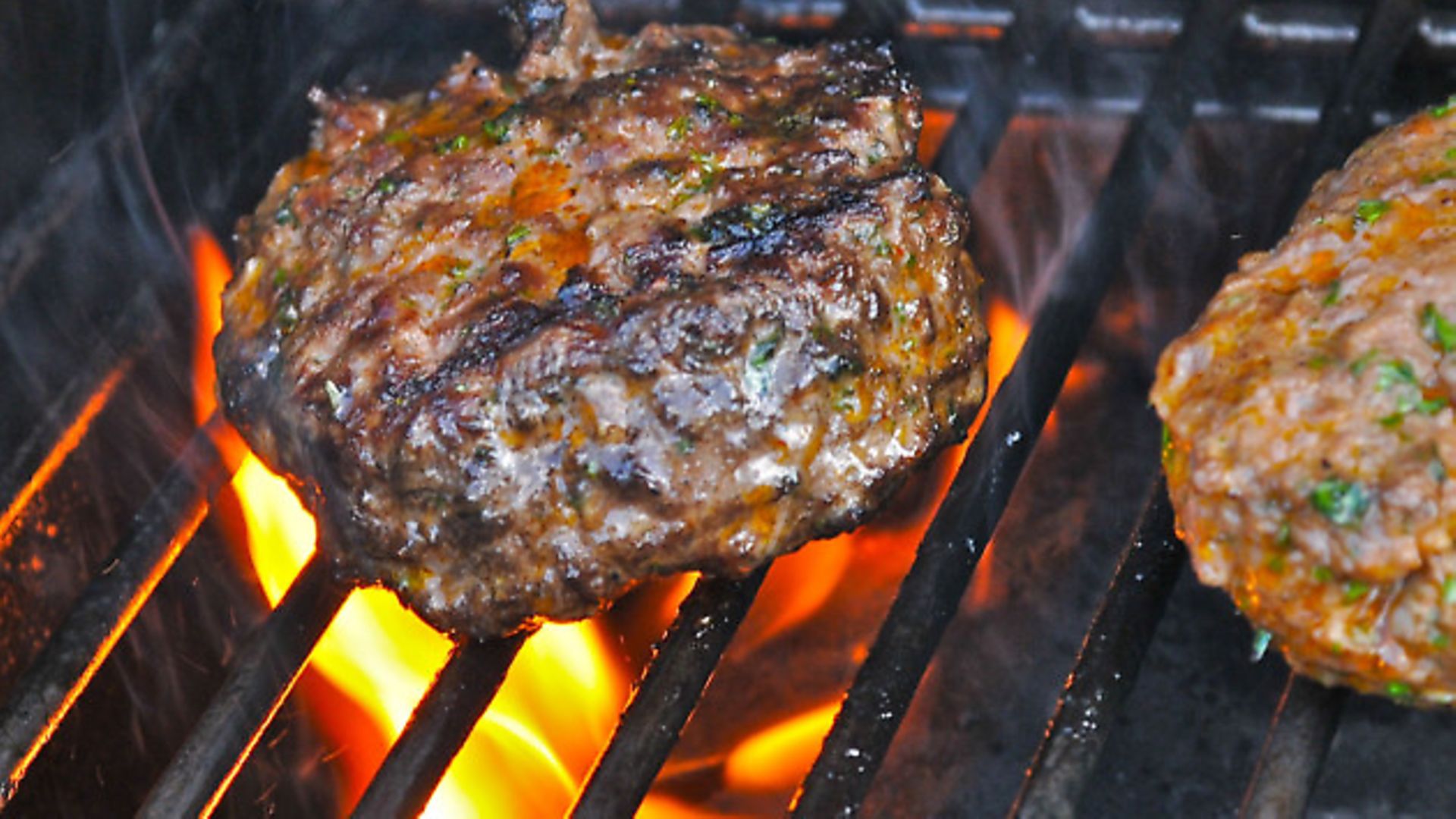Easy to make, great to eat and sure to win over game sceptics – here is Dom’s guide to brilliant burgers
 credit: Archant
credit: Archant
The evenings are drawing out and the sun has got his hat on. Time to dust down the Ray Bans and spend some quality time in the garden. And in our house, that means barbecue. And the burger is, for me, king of the grill. Not those mushy, insipid things from the supermarket, but real meat: venison. Crisp and brown on the outside, juicy and succulent in the middle, these are guaranteed to put a smile on the face of even the fussiest eater.
 credit: Archant
credit: Archant
Basic burgers:
 credit: Archant
credit: Archant
I tend to reserve prime cuts of younger animals for frying or roasting but I certainly don’t believe that you should only use off cuts or trimmings for burgers and sausages. In fact, I am happy to use prime meat for this – and it’s an ideal way of maximising the value of a tougher, older beast.
You will need a mincer – either an old hand-wound job (around £20 from kitchen stores), a dedicated electric number or you can get an attachment for your fancy Kenwood mixer. All three will work just fine.
As venison is pretty lean, and burgers require a bit of fat to stop them from being too dry, you will need to add some at this point. We used to reserve the extra fat from the big wild boar that we had shot for this purpose and it worked really well. A good local butcher will sell you flare or back fat, or for convenience, use fatty pork such as shoulder or belly. Try three quarters venison to one quarter pork and you can always tweak the mix to suit your tastes.
Seasoning:
You can buy ‘burger mix’ seasoning sachets from specialist stores, and these include flavourings and preservatives that will give your burger a longer shelf life. However, if you are making them to use fresh or freeze fresh, you can use store cupboard seasonings – plus I like the idea of using as few ‘processed’ additives as possible.
Classic combinations for venison such as bay, juniper, garlic and black pepper all work very well. If you are planning on serving these up to kids, I’d keep it pretty simple: salt, pepper and maybe a few fresh or dried chopped herbs such as rosemary and thyme.
Personally, I like to add chilli and garlic, while North African spices such as cumin and coriander also work brilliantly well. Some people also add mayo and ketchup for richness and sweetness, or a dash of Worcestershire or Tabasco sauce.
We have included some basic guidelines for the quantities but the best way to find the right balance for you is to fry off a little mini burger of the mixture to try it. Chef’s perks…
Really, the sky (or your imagination) is the limit here. I have, in the past, added fruit, onion, cubed cheese, a bit of booze… and that experimentation is part of the joy of making both burgers and sausages. You will soon hit on a winner that will become your trademark flavour and even the bad ones are usually still better than anything you could buy.
It is a good idea to leave the mixture in the fridge for a few hours to let the flavour develop and the mixture firm up. Handling firm meat is always easier.
Making the burgers:
You can make a burger fairly easily by taking a ball of the mixture and flattening it by hand. However, the edges can go a bit crumbly when you cook them, consistency of size is trickier and they lack that professional look you need to convince the suspicious! For just a few quid you can buy a simple to use plastic burger press that comes with wax paper discs. Kids love making these, too – so don’t be afraid to get them involved. Quarter pounder size are about right for your average British bun, but super-sizing is always an option for larger appetites!
Cooking:
These can be grilled or fried in the kitchen but are best cooked on the barbecue. I like mine just slightly pink in the middle for maximum juiciness. Be careful not to overcook them as they will dry out – medium to medium-well is ideal. Depending on how thick they are, two or three minutes each side to get good colour should be enough. I like to cook them quickly on a high heat and then rest them in a low oven for 10-15 minutes.
Serving:
Set up a ‘build your own burger’ factory! Buns, salads and sauces – provide a selection and let people create their own ‘special’. Sweet onions, fresh tomatoes, cheese and chilli peppers are all great accompaniments, along with ketchup, mayo, mustard and some crisp lettuce leaves.
Basic burger: (makes about 10 quarter pounders)
750g minced venison
250g minced pork shoulder or belly
2 tsp salt
1 tsp pepper
1 tsp of thyme
Spicy alternatives (just add to the basic burger recipe above):
A couple of crushed cloves of garlic (dried garlic powder is fine)
1tsp dried chilli flakes
1tsp Worcestershire sauce
Handful of fresh parsley, chopped
Or
1 tsp ground coriander
1 tsp ground cumin
½ tsp cinnamon
1 tsp smoked paprika
Handful of chopped fresh coriander
Mix all the ingredients together thoroughly by hand and leave to chill and firm-up for a couple of hours while the seasoning works its magic.
Divide them into equal sized portions of about 4oz (100g) and use a burger press to shape them into patties.
If you are freezing them, do it immediately. They will keep for a couple of days in the fridge if you want to prepare ahead of time.
Cook on a hot barbecue for about two/three minutes each side until nicely coloured but still juicy inside.
Stuff in a fresh bun with accompaniments of your choice and enjoy with a cold beer!